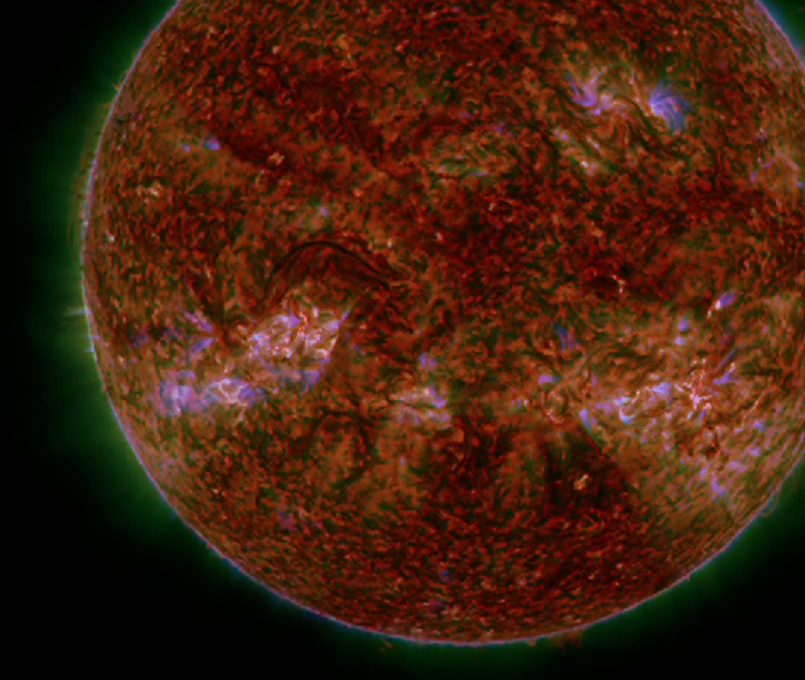Solar filaments are clouds of ionized gas above the solar surface squeezed between magnetic regions of opposite polarity. Being cooler and denser than the surrounding plasma, they appear as dark lines when seen on the solar disk using special filters. On 19 June, a filament north of sunspot region NOAA 2093 became unstable and swirled away from the Sun.

The event is best visible in EUV images taken by SDO/AIA 304. Around 15:00UT, the filament becomes unstable. About an hour later, the filament clearly gets torn, with the left part moving fast away from the filament's original position. The other part rains down onto the solar surface, while the outer end is severely twisted and in the process seems to eject an amount of relatively cool matter (dark in the AIA 304 images).

Over the next two hours, this material is caught in an upward swirl, completing a full 360 degrees turn around (and above) NOAA 2093, while the arc is gradually expanding. The helical movement is best visible in fast EUV-movies.

This movie first shows the event as seen in the relatively cool chromosphere (solar inner atmosphere, about 10.000 degrees), then in the transition zone (AIA 304, about 50.000-100.000 degrees). In the chromospheric imagery, not much movement is seen as the filament only seems to disappear. The corkscrew movements are much better captured in the AIA 304 imagery (see also this news item). The combination clips include also images from the hot corona and do not show the swirls very well. However, they do show a transient coronal hole, indicating the ejection of plasma into space. The associated coronal mass ejection probably hit Earth late on 23 June, but did not produce a substantial geomagnetic disturbance. The movie ends with three repeats of the AIA 304 clip, but played 4 times faster in order to better show the swirling movement of the ejected plasma.
Credits - Data and imagery for the movie clips were taken from the GONG H-alpha network, SDO, and (J)Helioviewer.
 |
 |





